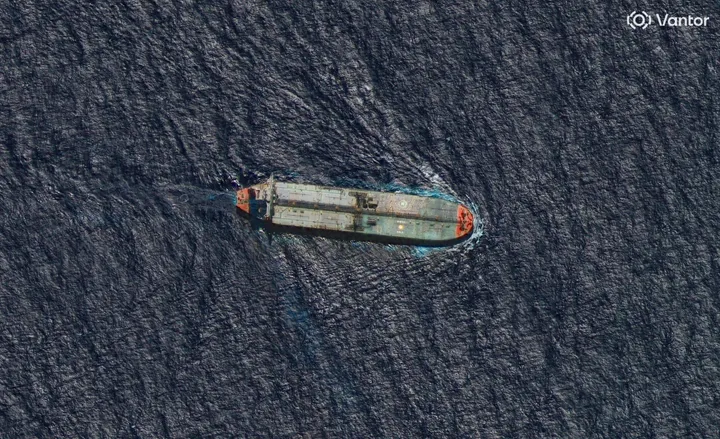Researchers say they have observed water vapour escaping high up in the thin atmosphere of Mars, offering tantalising new clues as to whether the Red Planet could have once hosted life.
The traces of ancient valleys and river channels suggest liquid water once flowed across the surface of Mars. Today, the water is mostly locked up in the planet's ice caps or buried underground.
But some of it is vaporising, in the form of hydrogen leaking from the atmosphere, according to the new research co-authored in the journal Science Advances by two scientists at Britain's Open University.
They detected the vapour by analysing light passing through the Martian atmosphere using an instrument called the Nadir and Occultation for Mars Discovery.
READ MORE:Elon Musk's astonishing mission to colonise Mars: here’s how he’ll do it
The device is travelling aboard the ExoMars Trace Gas Orbiter, a joint mission between the European Space Agency and Russia's Roscosmos.
"This fantastic instrument is giving us a never-before-seen view of water isotopes in the atmosphere of Mars as a function of both time and location," Manish Patel, senior lecturer in planetary sciences at the Open University, said.
"Measuring water isotopes is a crucial element of understanding how Mars as a planet has lost its water over time, and therefore how the habitability of the planet has changed throughout its history," he said.
It has been a busy week for Martian research.
On Wednesday, the Chinese Tianwen-1 probe entered the planet's orbit after launching from southern China last July, in the latest advance for Beijing's ambitious space programme.
The day before, the United Arab Emirates' "Hope" probe also successfully entered Mars' orbit, making history as the Arab world's first interplanetary mission.
READ MORE: NASA launches new Mars rover to look for signs of ancient life
Growing fan base in China
China is falling in love with space, inspired by the ruling Communist Party’s increasingly ambitious plans over the past two decades to launch humans into orbit and explore the moon and Mars.
Tourists flock to tropical Hainan island to watch rockets blast off. Others visit mock Mars colonies in desert sites with white domes, airlocks and spacesuits. The number of space-themed TV shows, books and fan clubs is growing.
READ MORE:United Arab Emirates: Amal functioning after launch to Mars
Other countries
That love affair also is catching on in Japan, India and other countries that are sending probes across the solar system, joining a club of explorers long dominated by Washington and Moscow.
On Tuesday, Amal, a spacecraft launched by the United Arab Emirates, swung into orbit.
In the Emirates’ biggest city, Dubai, the government projected images of Mars’ two moons into the sky. Dubai’s Burj Khalifa skyscraper glowed red at night. Billboards depicting Amal, Arabic for hope, tower over Dubai’s highways.
READ MORE:NASA's Mars 2020 rover to hunt Martian fossils, scout for manned missions
























